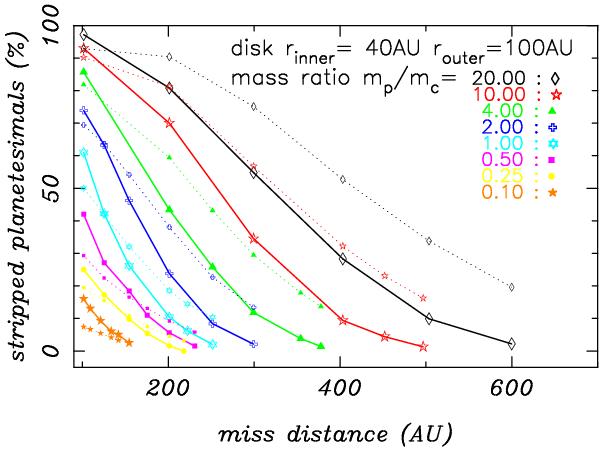Fig. 2

Fractions of planetesimals stripped off a disk during stellar flybys at various miss distances and for various color-coded mass ratios mp/mc of the passing to central stars. The motions of the disk and of the passing star are prograde and their orbital planes are coplanar. The inner and outer radii of the disk are 40 and 100 AU, respectively, at the start of the simulation. Thick lines connect the points computed for a disk with planetesimals initially set on circular orbits. Dotted lines connect the points computed for a dynamically excited disk with orbits of planetesimals initially set with random eccentricities and inclinations (see details at end of Sect. 2).
Current usage metrics show cumulative count of Article Views (full-text article views including HTML views, PDF and ePub downloads, according to the available data) and Abstracts Views on Vision4Press platform.
Data correspond to usage on the plateform after 2015. The current usage metrics is available 48-96 hours after online publication and is updated daily on week days.
Initial download of the metrics may take a while.


